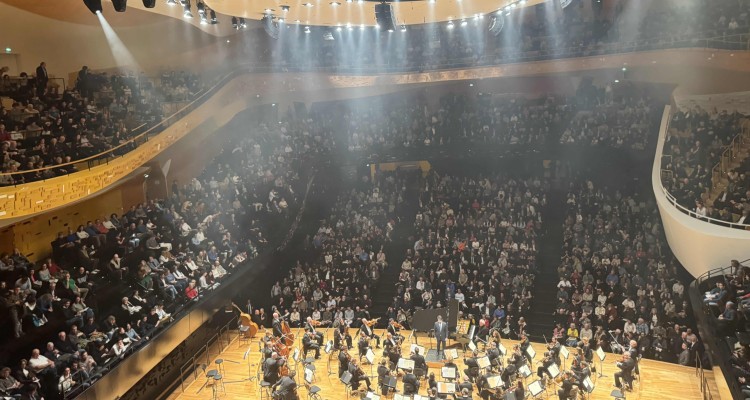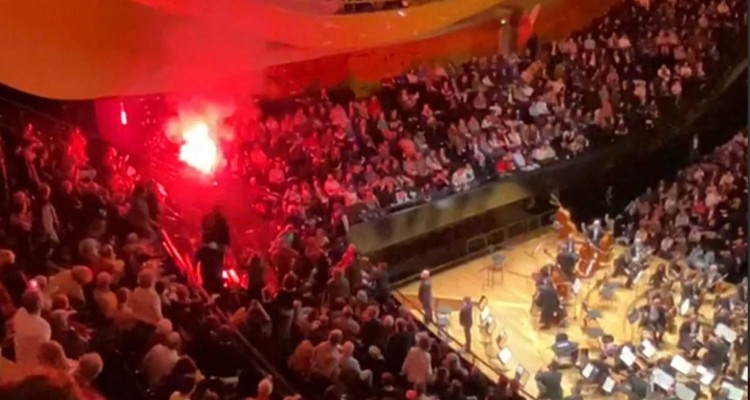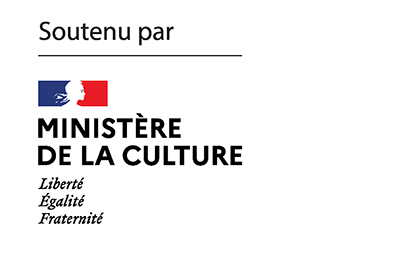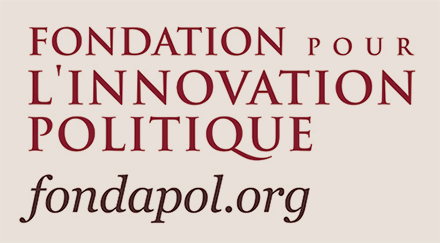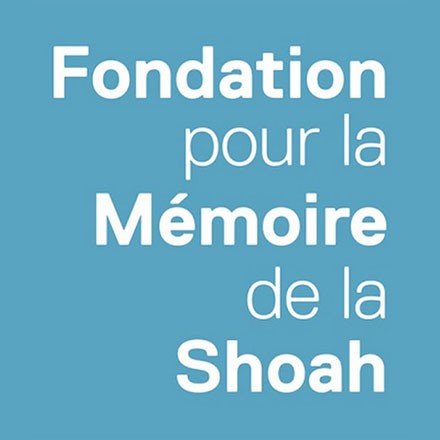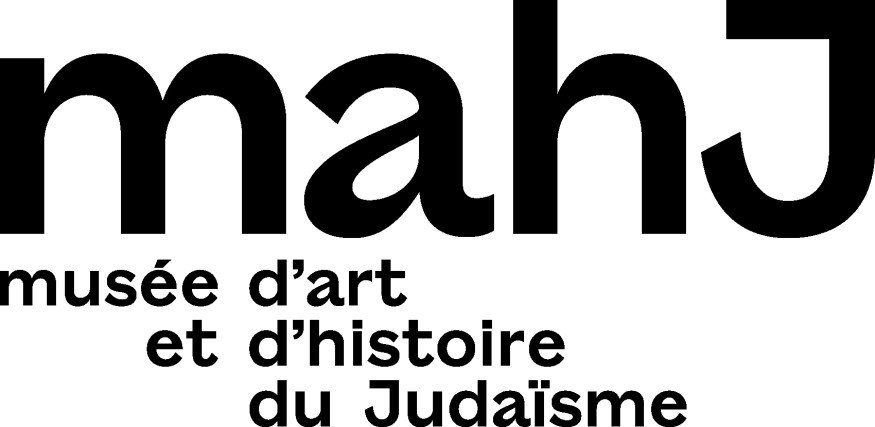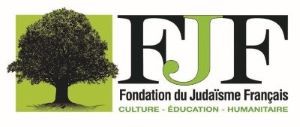Gabriel Abensour believes that Franco-Judaism has forgotten its spiritual heritage. Deploring the adoption of an ultra-Orthodoxy that rigidifies practices and minds, and criticizing the lack of audacity of the institutions representing the Jewish community, he calls for a revival of a Judaism that knows both the value of revolutionary universalism and the intellectual richness of Sephardic civilization.



I grew up in Strasbourg, one of the most dynamic Jewish communities in the country, with many institutions, schools, synagogues, and Batei Midrash (places of study). Despite my twelve years of Jewish schooling, and my assiduous attendance at synagogues and places of study, I left this community, this country, at the age of eighteen, with the feeling of leaving nothing behind. I had to come to Israel to discover not only Israeli Judaism but above all what French Judaism could and should have been at the end of the 20th century.
It was in Israel, and in the Hebrew language, that I heard for the first time about the Franco-Judaism in which I was supposed to have grown up. A Franco-Judaism that had seen the Revolution as the incarnation of universal Hebraism and that had produced numerous scholars, rabbis, and thinkers whose names I’d barely heard in twelve years of Jewish school. Who remembers Joseph Salvador, Salomon Munk, Lazare Wogue, and Zadoc Kahn[1]? Who still studies their writing? Among the younger generation, even the names of the builders of post-Holocaust French Judaism—such as André Neher, Léon Ashkénazi and Emmanuel Levinas—are far less known than those of ultra-Orthodox Israeli rabbis[2]. It was in Israel that I had the good fortune to meet Benjamin Gross, and then to read his writings. He was the founder of the school where I had spent my youth (a school that now deserves to bear his name). But in that same school—from 1996 to 2006—I never heard a teacher mention his name, let alone teach one of his texts.
Like many of my fellow Jews in France, I had roots that were not only French but also Sephardic and North African. While I was certainly aware of the cultural and culinary differences between Ashkenazim and Sephardim, my symbolic cultural capital remained rather limited. I remember the day I discovered on the bookshelf of the yeshiva where I was studying in Jerusalem the books of Rabbi Yossef Messas (1892-1974), who was Chief Rabbi of Tlemcen[A city located in Morocco where he held the position of rabbi during the French protectorate (1912-1956)], Meknes and Haifa. Having previously had a very folkloric conception of Sephardim, I suddenly discovered a rabbi with extremely broad intellectual horizons, a honed critical mind, and a halachic spirit as sharp as it was daring. Then, still in Israel, I discovered that the Sephardic world had produced not only rabbis, but also poets, intellectuals, activists, pioneers of anti-imperialist Zionism, maskilim, and sometimes figures who combined all these qualities at once.
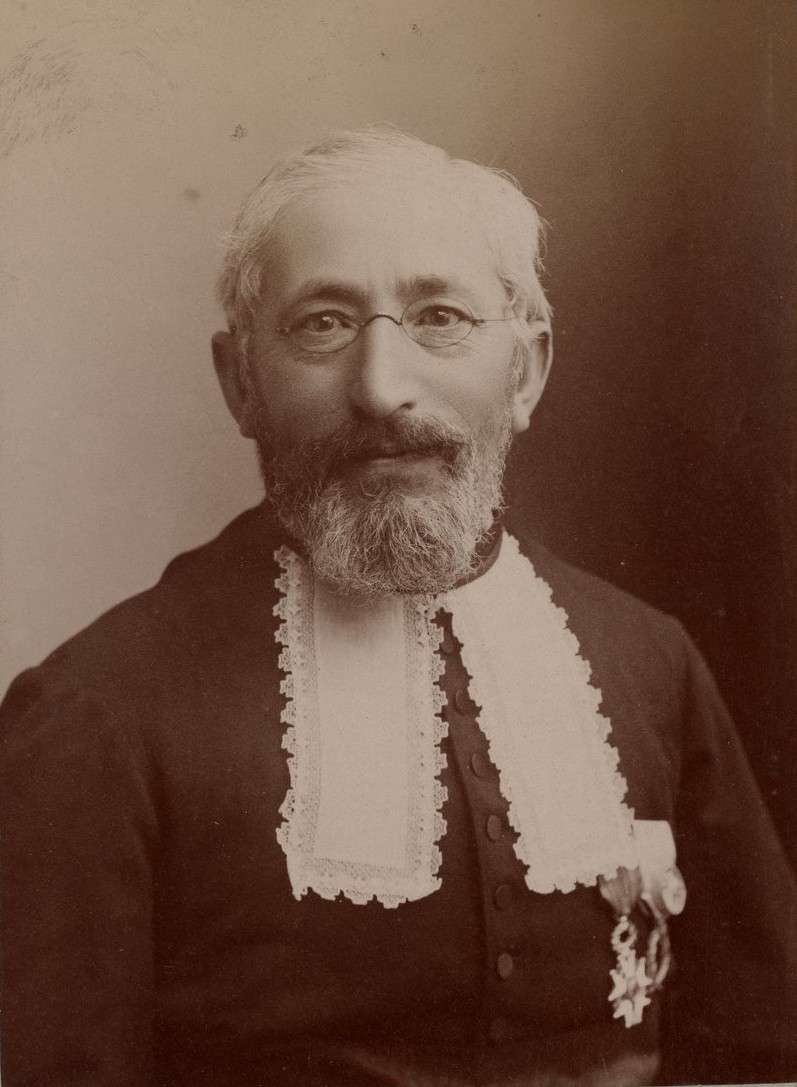
Contemporary French Judaism should find its origins in these two distinct currents. On the one hand, a Franco-Judaism that saw in the 1789 Revolution an incarnation of universal Hebraism. On the other, a Maghrebian Judaism, heir to the rich Sephardic civilization. The hybridization of these two currents has produced some remarkable figures, such as Abraham Hazan, Éliane Amado-Lévy, Charles Touati, René Samuel Sirat and Armand Abécassis. In a less religious context, we could also mention figures such as Albert Memmi, Jacques Derrida, Eliette Abécassis or Valérie Zennati[3]. But if we look at the younger generations, we can see that something has broken in the chain of transmission. Neither French nor Sephardic Judaism is being transmitted in France, let alone the blessed fruit of their union.
What nourishes contemporary French Judaism is mainly imported from elsewhere, both geographically from Israel and culturally from Eastern European ultra-Orthodoxy. The external contribution itself is not necessarily a problem. The different Jewish communities have always communicated, exchanged, and enriched each other. However, the successful integration of this external contribution requires a pre-existing, firmly-rooted identity. This is where contemporary French Judaism seems to fail. Amnesiac about its own French and Sephardic heritage, it has only fragments of memory to which borrowings have been more or less abruptly grafted.
The aim of this article is to try to understand the mechanisms that prevent the two heritages of contemporary French Judaism from being properly transmitted to the new generation. In this article, I would like to put aside conjunctural explanations—antisemitism, Israel, or the rise of communitarianism—in favor of a reflection rooted in the modern history of Franco-Judaism and Maghrebian Judaism, in order to propose a remedy.
A non-daring Franco-Judaism
One thing is clear—the Franco-Judaism of the 19th and 20th centuries has no spiritual heirs, and even its institutional continuity is fading from year to year. Of course, the spokesmen of official Judaism like to recall its memory. But anyone who has visited the Jewish communities of France, whatever their affiliation, knows that this façade of Judaism no longer represents even those who profess it. Some intellectuals discreetly deplore this situation. This is the case, for example, of Vincent Peillon[4] and Martine Cohen[5], who in their own way lament the death of this Franco-Judaism. A few rare Jewish voices are attempting to revive a French-style Judaism by trying to bring a Jewish perspective into full dialogue with contemporary social issues. They include figures as diverse as Chief Rabbi Gilles Bernheim[6] and Rabbi Delphine Horvilleur[7]. For the majority, however, ignorance prevails. The great names of post-revolutionary French Judaism are completely unknown to students in denominational schools, as well as to the vast majority of Jews attending synagogues. The heritage is there, but it is lost, unknown, and inaccessible.
Why does this Judaism show so little continuity? My suggestion is that, despite the erudition of some of its members, Franco-Judaism has always adopted a conciliatory and unadventurous line at the institutional level, having nipped in the bud any slightly more adventurous movement of thought likely to spread beyond France. This is a constant in the history of the Jewish people—only authors, ideas, and movements that transcend the borders where they were born end up fully integrated into Jewish memory. However, from the moment of their emancipation, reconfirmed by Napoleon, the Jews of France opted for a centralized, institutional Judaism, ideal for public representation, but asphyxiating for overly innovative intellectual debate.
If this middle ground succeeded in maintaining some communal cohesion, I believe it also prevented theological and conceptual work on the nature of post-emancipation Judaism. While on the other side of the Rhine groups of radical reformers and conservative intellectuals were forming, in France most of the energy was devoted to maintaining an increasingly unstable religious union that was deemed necessary for the full integration of the Jews into the Republic. In my opinion, the price of this façade union was the silencing of the most daring voices.
In this respect, the geographical and political proximity of French and German Jews makes it easier to highlight long-term differences. The same debates ran through communities on both sides of the Rhine in the early 19th century. Structurally, at the dawn of emancipation, Jews in both France and Prussia could worship only through an organized and officially recognized community. In France, they meekly accepted the creation of this centralized, state-run Judaism, which continued to exist long after the 1905 law marking the end of its legal hegemony. In Germany and Hungary, people soon fought for the right to establish independent communities whether Orthodox, Reform, or Neolog. In short, these internal struggles between Jews of different religious persuasions kept alive the spirit of debate—of machloket—so dear to traditional Judaism. Reform and Orthodox read each other, competed fiercely for the hearts of the faithful, and tried to outdo each other spiritually and intellectually.
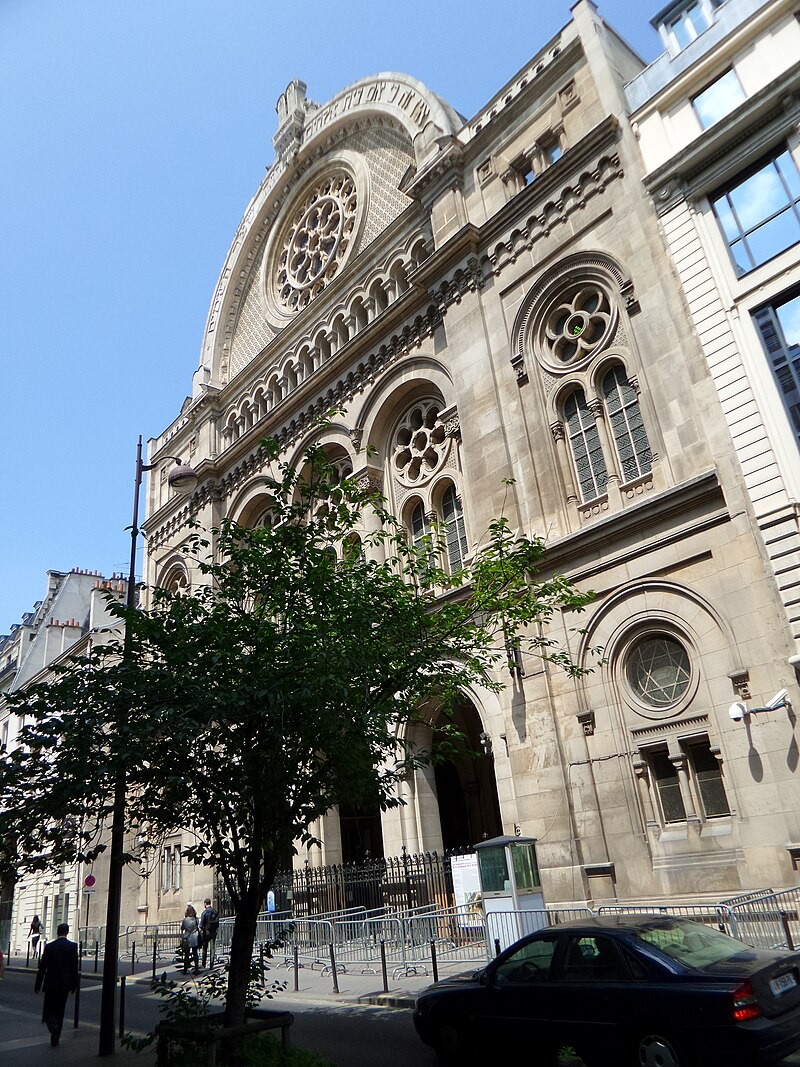
The result was a Judaism in perpetual emulation, which in a century managed to produce a bevy of thinkers, rabbis, and institutions whose influence persisted long after the extermination of that Judaism by the Nazi regime. The exegesis of an Orthodox Rabbi like S. R. Hirsch, though written in German, remains one of the most widely studied in contemporary Judaism. The Orthodox rabbinical seminary in Berlin, the positive historical seminary in Breslau, and the Hochschule of the German Reform movement may be long gone, but they laid the foundation for many rabbinical seminaries around the world. It is to these schools that millions of self-identified Orthodox, Masorti, and Reform Jews still look. Thinkers such as Herman Cohen, Franz Rosenzweig, and Martin Buber are regularly republished in German, English, and Hebrew, and continue to fuel contemporary Jewish thought.
On the French side, the reconciliation between reformers and conservatives led to permanent compromises, creating a bland, lukewarm Judaism unlikely to foster intellectual creativity. On the left, reformist demands were stifled by allowing a few meager changes in worship, such as the use of the organ in the synagogue. On the right, Orthodox fears were assuaged by avoiding any bold decisions. It seems that by this time Franco-Judaism had already resigned itself to the position it occupies today. Not innovative enough for the Reformers, not traditional enough for the Orthodox, it could only play a representative role.
And what about the Sephardic tradition?
The transformation of many Sephardic Jews into ultra-Orthodox according to the Ashkenazi model of Eastern Europe has already been documented by numerous Israeli sociologists. Some, like Yaakov Lupo, have even studied the case of Sephardic communities that immigrated to France. In recent decades, the Sephardim have become strongly Orthodox without having found a lasting solution to their spiritual confusion, which has lasted for more than a century. This disarray manifests itself in permanent religious mutations, from one decade to the next. Thus, while Manitou-style religious Zionism and the Lubavitcher model were in vogue in the early 1970s, they were soon challenged by the establishment of a Lithuanian-Sephardic Orthodoxy. In recent years, on the other hand, the Breslov movement and its Hasidic theology, perfectly adapted to the postmodern spirit of our times, have gained ground.
Here, too, I’d like to offer some reflections based on the long term, rather than a sociological perspective that focuses only on the last few decades. My main thesis is that, unconsciously or not, European colonialist prejudices against the Orient quickly took root among Ashkenazi Jewish populations from the early 19th century onward, including within the ultra-Orthodox world (which often mistakenly thinks of itself as less susceptible to outside influences). The establishment of colonial relations between Ashkenazim and Sephardim in the early 19th century had a dual effect. On the one hand, it led to the marginalization of the contribution of the Sephardim to the development of Judaism in the past centuries, going as far as making it invisible. On the other hand, it led to a gradual alienation of their own culture and traditions, to the point where they became convinced of the emptiness of their religiosity vis-à-vis the Ashkenazi Orthodox model.
In the 19th century, fewer and fewer Orthodox Ashkenazi rabbis cited the writing of their Sephardic contemporaries. By the early 20th century, this erasure was complete, and to this day it is extremely rare to find an Ashkenazi ruler citing the work of a Sephardic rabbi from recent centuries. In North Africa and the Middle East, on the other hand, the works of contemporary Orthodox rabbis are cited almost immediately after publication, always with the greatest respect.
This erasure is not limited to ultra-Orthodox circles. I recently published a revealing correspondence on this subject between the Chief Rabbi of Oran, David Ashkenazi[8] (who would also be the last Chief Rabbi of Algeria), and the Chief Rabbi of Mandatory Palestine, Abraham Isaac Kook. was a rabbi steeped in both local Sephardic traditions and the Franco-Judaism imported into Algeria since colonization. Kook, for his part, is considered one of the spiritual fathers of religious Zionism, known as much for his great erudition as for his freedom of thought and open-mindedness.
In 1932, Kook wrote a responsum condemning the use of the organ in the Great Synagogue of Oran. The prohibition itself was not surprising for an Orthodox rabbi. However, this responsum aroused the ire of the young Ashkénazi, who saw it—rightly, in my view—as a symptom of a far more systemic problem. In a scathing letter, Ashkénazi denounced three main points in turn, which he attributed not only to Kook as an individual, but to the Ashkenazi rabbinate as a whole. These three points, it seems to me, go far beyond the initial question of the organ in the synagogue, and brilliantly denounce colonial prejudices alien to Jewish tradition, but very much present in relations between Ashkenazim and Sephardim.
- Denial of the agency of Sephardic rabbis. Ashkénazi noted that Kook, contrary to all the rules of rabbinic tradition, took the liberty of making a decision regarding a foreign community without bothering to consult its rabbis. This attitude clearly implied that the local rabbis were incapable of leading their communities and needed what is now commonly known as a “white savior”—an Ashkenazi rabbi to lead them. This phenomenon still occurs today, even within French Orthodox Judaism, which has adopted the (modern) idea that there are “Gedolim,” a kind of transnational halachic authority. These Gdolim are, of course, almost always ultra-Orthodox Ashkenazi Israeli rabbis, or sometimes rabbis of Sephardic origin modeled after the latter. And yet, many French community leaders find it logical that crucial decisions should be made by rabbis who have never left Bnei Brak, rather than by local authorities who are aware of community issues.
- The universalization of Ashkenazi Judaism. One of Kook’s central arguments against the use of the organ in the synagogue was a famous excommunication issued by the Hungarian rabbi Moshe Sofer in 1819. Ashkénazi correctly pointed out that while Sofer had the right to act as he saw fit toward his own community, the mere fact that an Ashkenazi rabbi had banned the organ in his city over a century ago was not enough to establish a universal rule. Here again, Ashkénazi was merely denouncing a typical colonial bias that presented the European point of view as universal to the detriment of local cultures and traditions. As he repeatedly reminded Kook, the Sephardim not only possessed rabbis who were capable of ruling for their communities, but they also had their own hermeneutic and halachic traditions that had nothing to envy their European co-religionists.
- The myth of decline. In his letter, Askénazi made a point of proving the spiritual continuity of the Sephardic communities of North Africa with those of the Iberian period. This attitude can be seen as an attempt to combat a myth that is still firmly entrenched—that of the decline of the Sephardic communities after the expulsion decree of 1492. In reality, intellectual, poetic, legal, and Talmudic production did not cease with this new exile. Many of the writings that make up today’s Kabbalah were also written by descendants of the exiles who settled in Safed. Many classical works, such as the Jerusalem Talmud, were first printed in Salonika, and authoritative commentaries were written in that city. Halachic literature maintaining a boldness and a stature that continue to fascinate scholars of Hebrew law flourished in Morocco. At that time, the Sephardim were the only ones who continued to study the Hebrew language and make poetic or secular use of it, paving the way for the pioneers of modern Hebrew. Once again, it seems to me that this myth of deep-rooted decline is merely the counterpart of a similar myth regarding the peoples of Africa, the Middle East, and Asia, and thus serves as a pseudo-ethical justification for colonization.
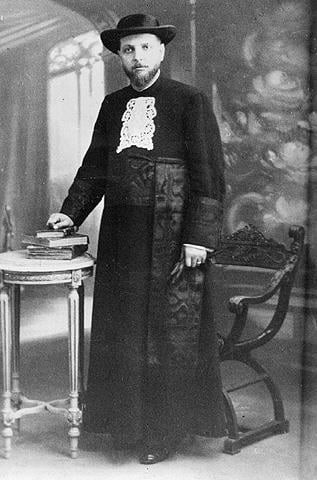
It should be emphasized once again that the colonial relations between Kook and the Algerian rabbis denounced by Askénazi were not anecdotal, but part of a systematic logic that Orthodox rabbis had understood as early as the end of the 19th century. In 1920, Rabbi Halperin, who pioneered the introduction of Orthodox Ashkenazi Judaism to the Maghreb, wrote:
“In North Africa, the Sephardic Jews need outside support. They are unable to defend their cause themselves, their educational system is at its lowest ebb, without order or authority… For them to be able to think, they need Ashkenazim to show them the right way… Only through Ashkenazi support will they be able to develop intellectual capacities and a sensibility that can improve their condition.”[9]
Halperin’s attitude was no different from the arrogance of the envoys of the Alliance Israélite Universelle with whom he competed. But unlike them, Halperin enjoyed widespread support among the local rabbis, who were completely unaware of his contempt for their communities and had a genuine respect for religious scholarship.
These colonial relations shaped the construction of two imaginary groups, composed, on the one hand, of Ashkenazi Jews, representatives of Jewish scholarship and authentic religiosity, and on the other of Sephardic masses, half-heartedly regarded as “good savages,” ignorant and primitive but full of good feelings, who could be integrated into true Judaism with a little educational effort. In fact, the integration was not always complete, with Sephardic Jews often regarded by their peers as “bad” ultra-Orthodox. But a century of Ashkenazi Orthodox hegemony has largely succeeded in dispossessing Sephardim of their heritage and convincing them of their dependence on Eastern European rabbis.
In France, this internalization reached its peak in the 1990s, when the rabbinate adopted a line of total submission to Ashkenazi ultra-Orthodoxy. However, many of the rabbis were themselves of Sephardic origin. But all that remained of their Sephardic heritage (at best) was a charming smile, a certain sense of humor, and a folklore that was tolerated as long as it didn’t conflict with ultra-Orthodox norms. The descendants of the good savages were able to retain their joy and good humor while combining it with the knowledge that their European brethren had been kind enough to pass on to them.
I’d like to conclude with two anecdotal but instructive examples. The first concerns the well-established custom among families in eastern North Africa of gathering under the paternal Talit at the end of Yom Kippur, men and women mixed. This custom has been severely criticized as contrary to halacha by rabbis from these same communities, but trained in Ashkenazi schools. Between the lines, the communities internalize the idea that on this issue, as on others, their ancestors lived in error until the first civilizing Ashkenazim arrived and showed them “the right way,” to use Halperin’s phrase.
A second example concerns our understanding of Judaism. A few years ago, I met an elderly rabbi of Moroccan origin who told me that in his youth he had studied with the famous Rabbi David Bouzaglo in Casablanca. When I asked him what they had studied together, expecting a reference to one of the Talmudic treatises, his answer was surprising—the poet Nahman Byalik, the secular Zionist thinker E’had Haam, and the Bible with commentaries by Abraham Ibn Ezra, one of the most classical analytical exegetes. As I continued to research, I was struck again and again by how deeply rooted modern Hebrew culture was in Morocco, and how naturally it was incorporated into what the religious elite considered Judaism. A “traditional” Judaism that easily reconciled poetry and Talmud, medieval and modern thought, religion, and culture. What do the most prominent speakers of French Judaism teach today, even though they come from the same tradition? What do the most popular websites promote? A narrow Judaism, overly orthodox and infantilizing. A Judaism that bears witness to a brutal uprooting followed by a hasty reconstruction, with ultra-Orthodoxy, badly imported from Israel, as its main content.
Conclusion
This text ends with a paradoxical observation. Contemporary French Judaism is quantitatively the largest in Europe and represents the third-largest Jewish community in the world, just behind Israel and the United States. Yet its qualitative contribution to the Jewish world as a whole is virtually nonexistent. Even when compared to its European neighbors, the picture is stark. English Jewry, for example, although less than half the size of France’s, is far more influential. Among them are the late Chief Rabbi Jonathan Sacks, of international stature, as well as Louis Jacob, influential in non-Orthodox circles, and Eliyahu Dessler, a leading figure in the ultra-Orthodox world. Sacks, Jacob, and Dessler have all been translated into French. To my knowledge, the only French rabbi of the last fifty years (and perhaps of the last hundred) to have been translated into English and Hebrew is Delphine Horvilleur. Why is it that no Conservative rabbi resonates with the rest of the Jewish world? Why is no French Orthodox rabbi read or quoted by his Israeli or American colleagues? I also mentioned above the example of Germany, which, even after its extermination, continues to enjoy a far greater aura than its French neighbor, both on the rabbinical level and in terms of Jewish thought.
Despite my acerbic observation, this text is not intended as a eulogy for French Judaism. History is never written, and the future of this Judaism depends above all on the choices made in the present. The question that seems most urgent to me is that of heritage. To whom and what are we heirs? What do we want to pass on to future generations? For the answer to be relevant, we must dare to think beyond the community itself. What can French Jewry contribute to the Jewish world as a whole, now and in the future? What legacy is it preparing to leave to Jewish memory?
In a well-known aphorism, much commented on by Hannah Arendt, the French poet René Char wrote—”Our heritage is preceded by no will.” Without a will, without any indication left to future generations as to the nature and content of spiritual legacies, heritage is nothing more than the distant memory of the treasure our ancestors possessed, a treasure whose map has been lost. In his book “The Passing Guest,” Israeli writer Shai Agnon proposed a metaphor that conveys a similar idea, but in a more traditional context. That of an emancipated Jew returning to the Beit Hamidrash, the study house of his childhood, only to discover that he has lost the key to the stacks of books on the shelves, which he can now see only through the dusty windows.
Neither Franco-Judaism nor the Maghreb Judaism of recent centuries has left us precise testaments. But we French Jews still hold the intellectual, linguistic, and cultural keys to their lost treasures. We are free to delve into them, to assemble them into an even greater treasure, and to present their most beautiful elements to the entire Jewish world. To do this, we must free ourselves from the burdens of history. It’s up to us to free ourselves from the institutional burden of Franco-Judaism so that we can better embrace its universalistic heritage. It’s up to us to free ourselves from internalized prejudices about a Sephardic community reduced to folklore so that we can rediscover its many intellectual and religious assets. It’s up to us to bring together, as much as possible, the best elements of these two universes to foster the emergence of a contemporary French Judaism whose influence will extend beyond the present.
To postpone the deadline is to risk losing forever the key to these treasures. And as Agnon writes, “I always meditate on these works that remain in the old Beit Hamidrash. They are only the remnants of a much greater treasure. When I had the key, I immersed myself in them and studied them. Now that the key has been lost and I am denied access, who will study them?“
Gabriel Abensour
Gabriel Abensour is a doctoral student in the Department of Jewish History at the Hebrew University of Jerusalem and a fellow at the Shalom Hartman Institute.
Notes
| 1 | Salvador was a 19th-century scholar from a Sephardi Jewish family who lived in the South of France. He tried to outline a universal religion based on a fusion of Judaism and Christianity and is regarded by some as a proto-Zionist. Salomon Munk was a 19th-century German-born Jewish-French Orientalist. Lazare Wogue was a 19th-century French rabbi and professor who, among other things, produced a translation of the Old Testament. Zadoc Kahn was an Alsatian-French rabbi and Chief Rabbi of France. He was well known for his philanthropic activity and promoted the project of setting up a Jewish colony in Argentina. |
| 2 | 20th-century French Jewish philosopher, exegete, and lecturer, André Neher became a professor at the University of Strasbourg after WWII. A close friend of Elie Wiesel, he worked to promote the study of modern Hebrew in France, Jewish-Christian friendships, and the revival of Jewish thought in France after the Holocaust. Together with Léon Ashkénazi and Emmanuel Levinas, he was a founding member of “L’école de Pensée Juive de Paris,” a spiritual and intellectual movement that developed in Orsay and later around the Annual French Jewish Intellectuals Conferences, and aimed at reviving Post-Holocaust French Jewry from its ashes. Born in Algiers, Rabbi Léon Ashkénazi (nicknamed “Manitou ” after his joining the Jewish Scouts of France) was the descendant of a prestigious rabbinical line of Spanish kabbalistic scholars. He fought as a French Legion soldier during WWII. As an intellectual figure, Rav Ashkenazi influenced the French School of Jewish Thought. He moved to Israel after the Six-Day War. Emmanuel Levinas was a major French philosopher. Born in Lithuania he studied in Strasbourg and translated Husserl and Heidegger. His work is based on “ethics as first philosophy.” This thinker, at the crossroads of phenomenology and existentialism, reinterpreted the concept of the Other, giving it a central place. A great reader of the Talmud, he has inspired many contemporary thinkers. |
| 3 | Albert Abraham Hazan (1920-2003) was a rabbi born in French Algeria who first served as a military chaplain in France before emigrating to Israel, where he worked tirelessly to reintegrate prisoners into society. He is the author of several books, including “Yom Kippour : guerre et prière” [Yom Kippur: war and prayer]. Éliane Amado-Lévy was a French philosopher and psychoanalyst. Born in Marseille in 1919, she died in Jerusalem in 2006. French grand-rabbi, philosophy researcher, and professor Charles Touati was born in Tlemcen (French Algeria). Known for his teaching at the Séminaire israélite de France (the central rabbinical school of France) and also at the École pratique des hautes études. Born in 1930 in Bône (now Annaba), French Algeria, and died in 2023 in Jerusalem, René Samuel Sirat was a French rabbi. A professor at the Institut national des langues et civilisations orientales (INALCO), where he headed the Hebrew and Jewish Studies Department, he was Chief Rabbi of France from 1981 to 1988. Born in Morocco in 1933, Armand Abécassis is a French writer and professor of general and comparative philosophy at the Université Michel-de-Montaigne. His teaching and writing aim to promote a fertile dialogue between Judaism and Christianity. He is the father of Eliette Abécassis. Born in Tunis in 1920 to an Arabic-speaking Jewish family, Albert Memmi is a French-language writer and essayist. An outspoken anti-globalization and anti-racism activist, he has been praised by some of the world’s greatest thinkers, from Senghor to Camus. Algerian-born French Jewish philosopher, Jacques Derrida is considered one of the most respected thinkers of deconstructivism and retained a major academic influence throughout the United States and Europe. Daughter of Rabbi Abecassis, Éliette Abécassis, born in 1969 in Strasbourg, is a French writer, director and screenwriter. Valérie Zenatti is a French writer, translator, and screenwriter. She taught Hebrew at INALCO and translated the Israeli writer Aharon Appelfeld. Her novels have been very successful and have won several prestigious awards. |
| 4 | Vincent Peillon is a French politician and philosophy professor of the Jewish faith. A leading member of the Socialist Party, he served as Minister of National Education from 2012 to 2014. |
| 5 | Martine Cohen, born in 1951 in Constantine (French Algeria), is a sociologist. A tireless campaigner for peace in the Middle East and for human rights, she is director of studies at the CNRS and has written several works on the place of the Jewish religion in a French pluralistic society. |
| 6 | Gilles Uriel Bernheim, born in 1952 in Aix-les-Bains was the rabbi of the students and the chaplain of hospitals before becoming the rabbi of the Grand Synagogue de Paris and, ultimately, Chief Rabbi of France in 2009. |
| 7 | Delphine Horvilleur, born in Nancy in 1974, is a French writer and rabbi affiliated with the Mouvement juif libéral de France (MJLF), which in turn is affiliated with the World Union for Progressive Judaism. Her journalistic activities, educational videos, and frequent appearances in the mass media—as well as her progressive ideas—. are highly respected across the board. She is also the director of the Tenoua editorial team. |
| 8 | Father of Léon Ashkénazi. |
| 9 | Yaakov Lupo, Shas Delita. Tel Aviv: Hakibutz Hameuchad, 2004. |

